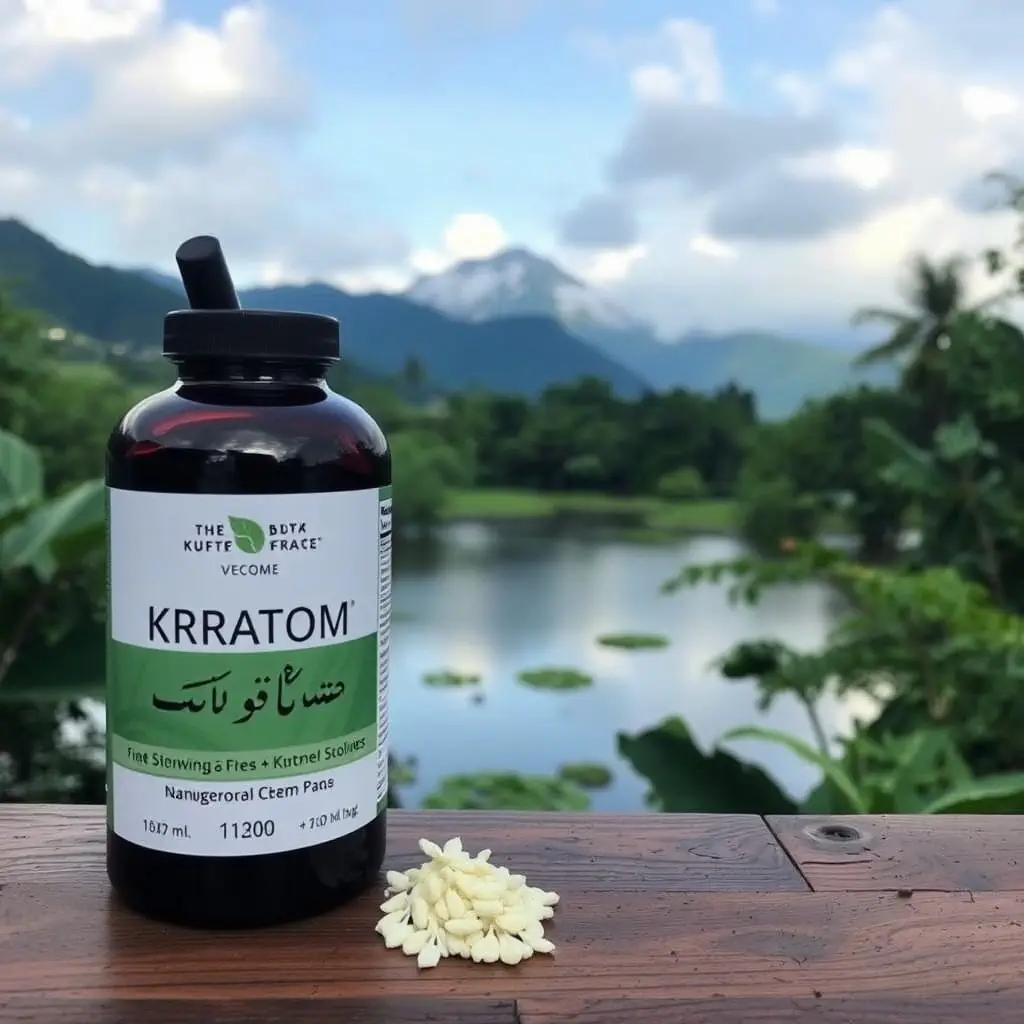Kratom, derived from Southeast Asian plants, has gained attention as a natural supplement among athletes for its potential to enhance performance by modulating energy levels and pain relief through its active alkaloids, mitragynine and 7-hydroxymitragynine. It's used to combat fatigue and augment stamina during rigorous training and competitions. However, due to its interaction with opioid receptors, it can affect focus and pain relief. Athletes should be cautious with dosage and timing to maximize benefits while avoiding adverse effects. Legality is a significant factor, especially for those traveling internationally or between states within the U.S., as kratom's status and regulation are subject to change and vary by location. The FDA does not regulate kratom as a dietary supplement, which presents concerns regarding product consistency and safety. Therefore, athletes interested in using kratom for performance enhancement should approach it with caution, seek expert advice, and ensure they comply with legal requirements related to its use. This includes being mindful of travel regulations when carrying kratom across borders.
Exploring the intersection of natural supplements and athletic prowess, this article sheds light on kratom’s potential role in enhancing performance. Delving into its effects, we examine how athletes might strategically incorporate kratom into their routines for optimal results. Additionally, we navigate the complex legal landscape surrounding kratom possession and travel, offering guidance for those looking to include this botanical substance in their fitness regimen. With a focus on dosage, timing, and safety, readers will gain a comprehensive understanding of how kratom can be utilized responsibly within the sports arena.
- Understanding Kratom's Role in Athletic Performance Enhancement
- The Legality and Logistics of Traveling with Kratom: A Comprehensive Guide
- Strategic Use of Kratom for Peak Performance in Sports: Dosage, Timing, and Safety Considerations
Understanding Kratom's Role in Athletic Performance Enhancement
Kratom, a plant native to Southeast Asia, has garnered attention in various circles, including those interested in athletic performance enhancement. The leaves of kratom contain alkaloids, such as mitragynine and 7-hydroxymitragynine, which have been the subject of interest due to their potential effects on energy levels, pain relief, and endurance. Athletes may explore kratom as a natural supplement to augment their training regimens, with claims suggesting it can help in managing fatigue and increasing stamina during workouts or competitions. However, it’s crucial for individuals considering kratom for performance enhancement to understand its mechanisms and effects thoroughly. Kratom’s interaction with opioid receptors can influence mood and perception of pain, potentially leading to improved focus and reduced discomfort during physical activities.
When integrating kratom into an athletic routine, it’s important to consider dosage and the timing of its ingestion to maximize benefits without risking adverse effects. Additionally, travelers who use kratom should be aware of the legal status of kratom in their destination, as its legality varies by country and within the United States at the state level. The FDA does not regulate kratom as a dietary supplement, which means products can have inconsistent alkaloid levels that might affect performance and safety. Therefore, athletes looking to enhance their performance with kratom should approach its use with caution, seeking guidance from knowledgeable sources and potentially consulting with healthcare professionals. Proper dosage and adherence to legal guidelines are paramount when considering kratom as part of an athletic regimen.
The Legality and Logistics of Traveling with Kratom: A Comprehensive Guide
When considering the legality and logistics of traveling with kratom, it’s crucial to be well-informed about the laws in different jurisdictions, as they can vary significantly across the United States and internationally. Kratom, derived from the Mitragyna speciosa tree, is a naturally occurring plant that some individuals use for its potential effects on energy levels and overall well-being. As of this writing, kratom is legal at the federal level in the U.S., but its status can differ by state and city, with some regions imposing restrictions or outright bans. Travelers must verify the current legality of kratom in their destination and any transit points to avoid unintentional violations.
For those looking to travel domestically within the U.S., it’s advisable to consult the latest guidelines from the Transportation Security Administration (TSA) and the Drug Enforcement Administration (DEA). The TSA allows passengers to bring kratom in both checked luggage and carry-on bags, providing it is packed appropriately and not in a liquid form for carry-ons. Internationally, the legality of carrying kratom can be more complex, as countries have different regulations regarding the import of plant-based substances. It’s imperative to check with the U.S. Customs and Border Protection (CBP) and the embassy or consulate of the destination country for specific guidelines. Travelers should consider obtaining a written documentation or a prescription from a licensed practitioner when transporting kratom across borders, as this may help facilitate smoother customs processes. Whether you’re planning to fly or travel by other means, always ensure that your kratom is packaged securely and labeled accurately to avoid any complications during the journey.
Strategic Use of Kratom for Peak Performance in Sports: Dosage, Timing, and Safety Considerations
When incorporating kratom into an athletic regimen for performance enhancement, it is paramount to approach its use with a strategic mindset, focusing on dosage, timing, and safety. Kratom, derived from the leaves of Mitragyna speciosa, has been traditionally used in certain cultures for its stimulating or sedative effects, which can potentially influence athletic performance when applied judiciously. The alkaloids present in kratom, such as 7-hydroxy mitragynine and mitraphylline, may contribute to increased energy levels, pain reduction, and improved mood—all of which can be beneficial for athletes looking to augment their training and competition experience.
Athletes considering the use of kratom should pay close attention to dosage, as it varies greatly among individuals due to differences in metabolism, tolerance, and sensitivity. A typical dosage range might start from a minimal effective dose (MED) for stimulating effects, which can be around 1-5 grams, up to a higher dosage for more pronounced pain relief or sedative effects, often ranging from 8-15 grams. It is crucial to begin with a lower dose and gradually increase as needed, while always monitoring the body’s response. Timing of intake is equally significant; consuming kratom too close to competition may lead to adverse effects such as sedation or gastrointestinal discomfort. Therefore, athletes should experiment with dosage and timing well in advance of any competitive event to determine what works best for their unique physiology. Safety considerations are non-negotiable; kratom’s long-term effects are not fully understood, and it is a controlled substance in several countries, including the United States, where its legal status varies by state. Thus, athletes must navigate the complexities of travel regulations, as the transport of kratom across state lines or international borders can be subject to legal restrictions. Always consult with a healthcare professional before integrating kratom into your athletic training to ensure it aligns with your health goals and adheres to legal guidelines, especially when considering travel with kratom.
Navigating the complexities of athletic performance enhancement, this article has explored the potential role of kratom in enhancing physical and mental endurance, as well as the strategic use of this substance for peak performance in sports. We’ve delved into understanding kratom’s effects on athletic capabilities and addressed the critical aspects of safely incorporating it into an athlete’s regimen. Additionally, we’ve provided a detailed guide on the legality and logistics of traveling with kratom, ensuring athletes can access this supplement responsibly, whether at home or while competing abroad. It’s clear that when used judiciously, kratom may offer performance benefits to athletes; however, adherence to legal frameworks and careful dosage planning are paramount for safety and efficacy. Always consult with healthcare professionals before integrating kratom into your training routine to ensure it aligns with your personal health goals and legal restrictions in your jurisdiction.






